#Myles Mansfield
Photo
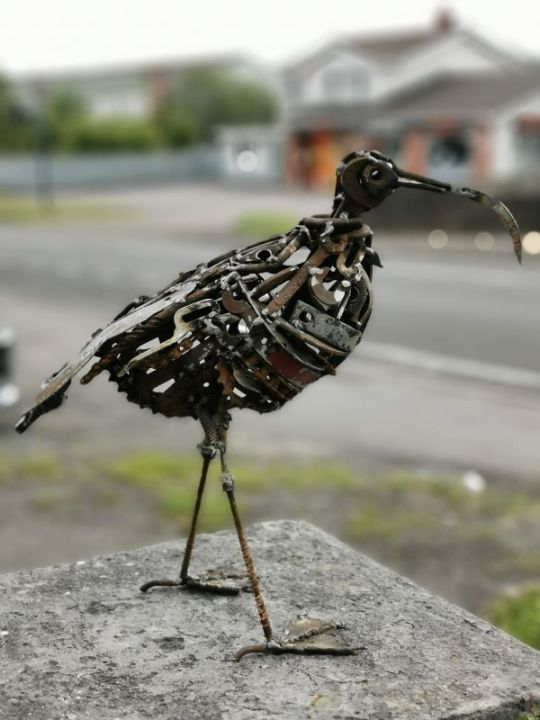
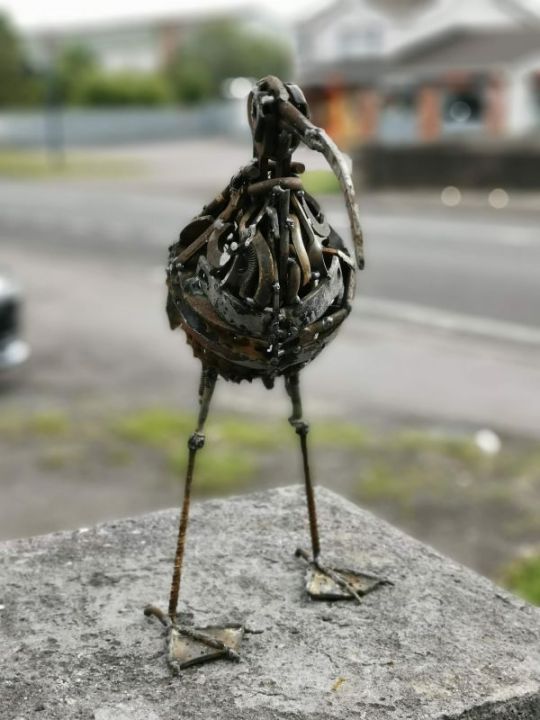



A sculpture titled 'Curlew (Large Recycled Steel Garden Yard statues)' by sculptor Myles Mansfield. In a medium of recycled mild steel and in an edition of 1/1.
5 notes
·
View notes
Text
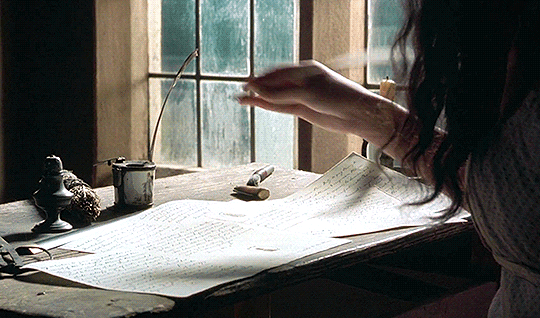

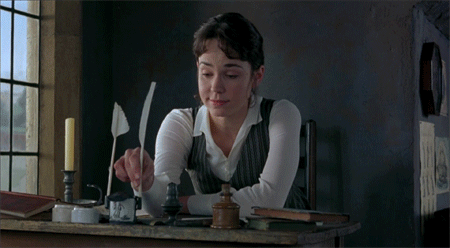


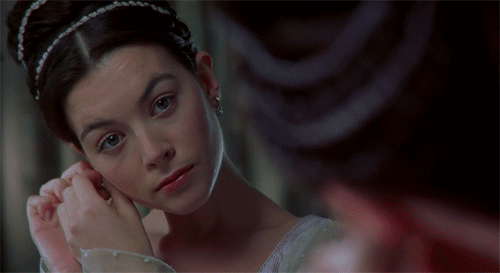





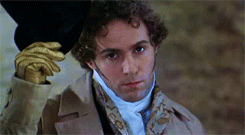
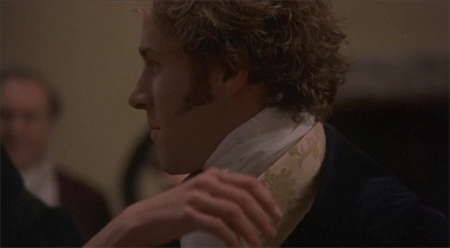







#mansfield park#frances oconnor#johnny lee miller#sophia myles#alessandro nivola#lindsay duncan#amelia warner#james purefoy#hugh bonneville#victoria hamilton#anna popplewell#embeth davidtz#charles edwards#patricia rozema#jane austen
8 notes
·
View notes
Text
Moonlight (2007) AU where Beth has read twilight out of curiosity before meeting Mick (the book came out in 2005)
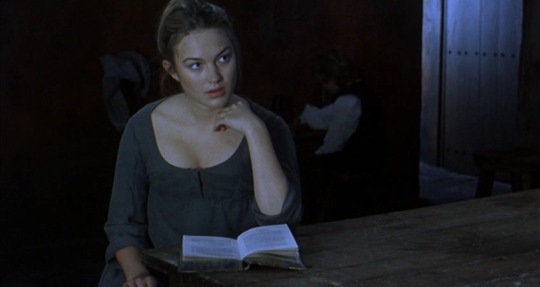

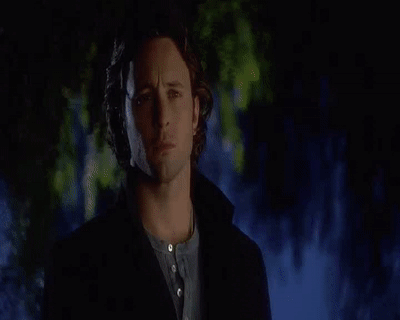
Picture : Sophia Myles from a movie she was in called Mansfield Park (1999)
#moonlight cbs#cbs moonlight#moonlight tv#tv show#mick st. john#beth turner#alex o'loughlin#sophia myles#mention of:#mansfield park#1999#movie#twilight saga#twilight books#vampire#AU#alternate universe
6 notes
·
View notes
Text
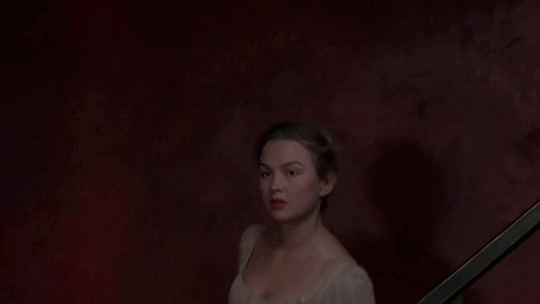




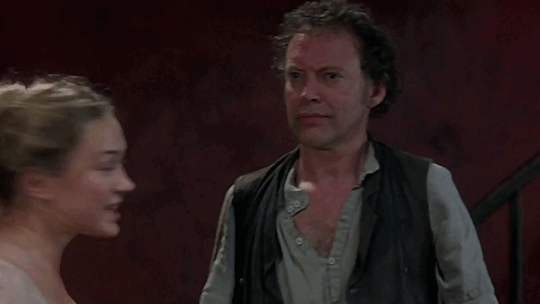



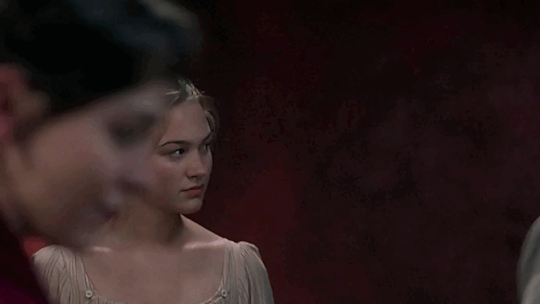

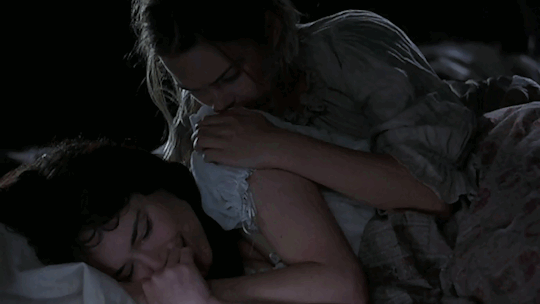

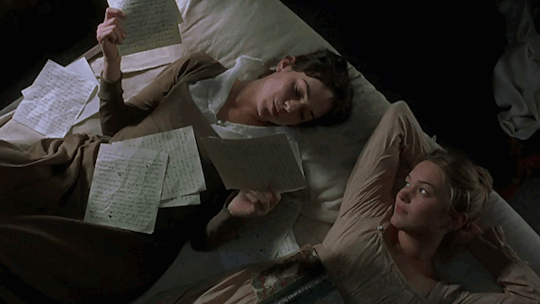

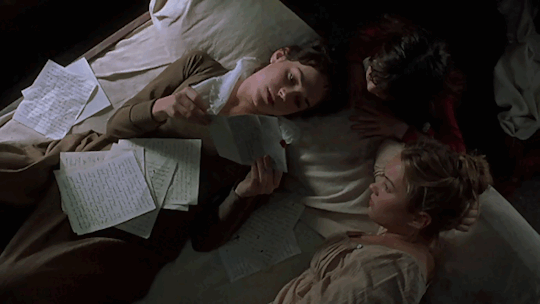
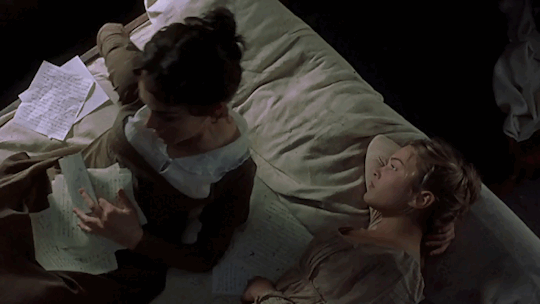

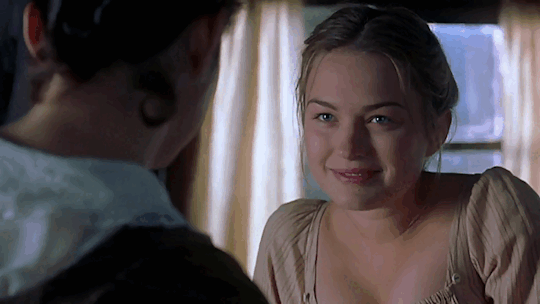


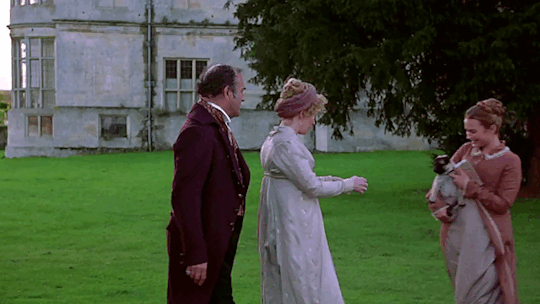



Here is a #49 gifs of Sophia Myles in Mansfield Park. All of these gifs were made by me from scratch, so do not redistribute or claim them as your own. If using, please give this a like and reblog!
0 notes
Text
Reading List for 2023
I have settled on my reading list for the year and my reading goal. The books below encompass the books I will choose from (I don't expect to finish all of them). My goal is to read 52 books this year, not including JAFF. I will probably return to this list several times just to discuss how it is going.
Nonfiction
This Changes Everything: Capitalism vs. the Climate by Naomi Klein (2014)
Zami: A New Spelling of My Name by Audre Lorde (1982)
Warrior Poet: A Biography of Audre Lorde by Alexis de Veaux (2006)
The Year of Magical Thinking by Joan Didion (2007)
Blue Nights by Joan Didion (2011)
Let Me Tell You What I Mean by Joan Didion (2021)
A House of My Own: Stories from My Life by Sandra Cisneros (2015)
A Taste of Power: A Black Woman’s Story by Elaine Brown (1992)
Some of Us Did Not Die by June Jordan (2002)
On Call: Political Essays by June Jordan (1998)
The Cultural Politics of Emotion by Sara Ahmed (2004)
Upstream: Selected Essays by Mary Oliver (2016)
Funny in Farsi: A Memoir of Growing Up Iranian in America by Firoozeh Dumas (2004)
The Choice: Embrace the Possible by Edith Eger (2017)
Crying in H Mart by Michelle Zauner (2021)
Ohitika Woman by Mary Brave Bird (1994)
And Our Faces, My Heart, Brief as Photos by John Berger (1991)
Time is the Thing a Body Moves Through by T Fleischmann (2019)
Ex Libris by Anne Fadiman (1998)
The Care Manifesto by The Care Collective (2020)
Dancing at the Edge of the World by Ursula K. Le Guin (1997)
Fiction
A Book of Common Prayer by Joan Didion (1977)
Colorless Tsukuru Tazaki and His Years of Pilgrimage by Haruki Murakami (2014)
On Earth We’re Briefly Gorgeous by Ocean Vuong (2019)
The Story of a New Name by Elena Ferrante (2013)
Those Who Leave and Those Who Stay by Elena Ferrante (2014)
The Story of the Lost Child by Elena Ferrante (2015)
The Lost Daughter by Elena Ferrante (2008)
The Bone People by Keri Hulme (1986)
Gilead by Marilynne Robinson (2006)
Sense and Sensibility by Jane Austen (1811)
Mansfield Park by Jane Austen (1814)
Northanger Abbey by Jane Austen (1817)
Atonement by Ian McEwan (2003)
The Sentence by Louise Erdrich (2021)
The Dictionary of Lost Words by Pip Williams (2021)
The Fellowship of the Ring by J.R.R. Tolkien (1954)
The Two Towers by J.R.R. Tolkien (1954)
The Return of the King by J.R.R. Tolkien (1955)
Babel by R.F. Kuang (2022)
Moonflower Murders by Anthony Horowitz (2020)
The Word is Murder by Anthony Horowitz (2018)
The Unlikely Pilgrimage of Harold Fry by Rachel Joyce (2013)
Poetry
Time is a Mother by Ocean Vuong (2022)
Blue Iris: Poems and Essays by Mary Oliver (2006)
Work
The Hidden Inequities of Labor-Based Contract Grading by Ellen Carillo (2021)
Queer Silence: On Disability and Rhetorical Absence by J. Logan Smilges (2022)
Our Body of Work ed. by Melissa Nicolas and Anna Sicari (2022)
Teachers as Cultural Workers by Paulo Freire (2005)
Living a Feminist Life by Sara Ahmed (2017)
The Cultural Politics of Emotion by Sara Ahmed (2004)
The Vulnerable Observer by Ruth Behar (1997)
Getting Lost by Patti Lather (2007)
Race, Rhetoric, and Research Methods by Alexandria Lockett, Iris D. Ruiz , James Chase Sanchez, and Christopher Carter (2021)
Opening Spaces by Patricia Sullivan and James Porter (1997)
Decolonizing Methodologies by Linda Tuhiwai Smith (2021)
Counterstory by Aja Y. Martinez (2020)
The Courage to Teach by Parker Palmer (2017)
We Make the Road by Walking by Paulo Freire and Myles Horton
Writing with Power by Peter Elbow (1998)
Writing without Teachers by Peter Elbow (1998)
The Anti-Racist Writing Workshop by Felicia Chavez (2021)
26 notes
·
View notes
Text
2023 Cleveland Guardians Roster
Pitchers
#24 Triston McKenzie (Palm Beach County, Florida)
#31 Sam Hentges (Arden Hills, Minnesota)
#34 Noah Syndergaard (Mansfield, Texas)*
#37 Trevor Stephan (Magnolia, Texas)
#41 Logan Allen (Orange City, Florida)**
#44 Xzavion Curry (Atlanta, Georgia)
#47 Cal Quantrill (Port Hope, Ontario)
#48 Emmanuel Clase (Río San Juan, Dominican Republic)
#49 Eli Morgan (Redondo Beach, California)
#52 Nick Sandlin (Columbia County, Georgia)
#53 Daniel Norris (Johnson City, Tennessee)*
#57 Shane Bieber (Laguna Hills, California)
#58 Michael Kelly (Boca Raton, Florida)*
#61 Tanner Bibee (Mission Viejo, California)**
#62 Enyel De Los Santos (Santo Domingo, Dominican Republic)
#63 Gavin Williams (Fayetteville, North Carolina)**
Catchers
#23 Noah-Gibson Naylor (Mississauga, Ontario)
#35 Cam Gallagher (Lancaster, Pennsylvania)*
Infielders
#0 Andrés Giménez (Barquisimeto, Venezuela)
#2 Tyler Freeman (Rancho Cucamonga, California)
#6 Brayan Rocchio (Santiago De León De Caracas, Venezuela)**
#8 José Tena (San Cristóbal, Dominican Republic)**
#11 José Ramírez (Baní, Dominican Republic)
#12 David Fry (Grapevine, Texas)**
#13 Gabriel Arias (La Victoria, Venezuela)
#22 Joshua-Douglas Naylor (Mississauga, Ontario)
Outfielders
#7 Myles Straw (Bradenton, Florida)
#10 Ramón Laureano; Jr. (Santo Domingo, Dominican Republic)*
#17 Will Brennan (Overland Park, Kansas)
#38 Steven Kwan (Fremont, California)
#39 Oscar González (Sabana Grande De Pelenque, DR)
#56 Kole Calhoun (Buckeye, Arizona)*
Coaches
Manager Terry Francona (New Brighton, Pennsylvania)
Bench coach DeMarlo Hale (Chicago, Illinois)
Hitting coach Chris Valaika (Santa Clarita, California)
Assistant hitting coach Vic Rodriguez (New York, New York)
Pitching coach Carl Willis (Yanceyville, North Carolina)
Assistant pitching coach Joe Torres (Kissimmee, Florida)
Bullpen coach Rigo Beltrán (Tijuana, Mexico)
Bullpen catcher Armando Camacaro (Santiago De León De Caracas, Venezuela)
Bullpen catcher Ricky Pacione (Newburgh, New York)
1B/catching coach Santos Alomar; Jr. (Salinas, Puerto Rico)
3B/infield coach James Sarbaugh (Shillington, Pennsylvania)
Assistant coach J.T. Maguire (Phoenix, Arizona)
Run Coordinator Jason Esposito (Bay Village, Ohio)
Replay coordinator Mike Barnett (Columbus, Ohio)
#Sports#Baseball#MLB#Cleveland Guardians#Celebrities#Florida#Georgia#Texas#North Carolina#Dominican Republic#Minnesota#Tennessee#Pennsylvania#Venezuela#Kansas#Arizona#Ohio#New York#Puerto Rico#Mexico#Illinois#New York City#Awesome
0 notes
Text
Jul. 11—Three people accused by the U.S. Department of Justice of supplying fatal doses of fentanyl to two Hawaii men who died last month at a Waikiki hotel pleaded not guilty Monday.
Three people accused by the U.S. Department of Justice of supplying fatal doses of fentanyl to two Hawaii men who died last month at a Waikiki hotel pleaded not guilty Monday.
Keina Breit Drageset, 26, and Avery James Garrard, 31, are accused of smuggling drugs into the state through the mail and providing them to Jeffrey P. Waz, 63.
"As we see fentanyl increasingly showing up in our investigations, we can expect more users to suffer death or serious bodily injury from fentanyl overdoses, " U.S. Attorney Clare E. Connors told the Honolulu Star-Advertiser. "We will continue to work with our state and county law enforcement partners to coordinate the collection of evidence and to bring criminal charges that address the seriousness of the criminal conduct, including charges that come with a mandatory minimum sentence of 20 years and a potential life sentence without parole."
All three entered not-guilty pleas Monday before U.S. Magistrate Judge Kenneth J. Mansfield.
"Ms. Drageset has entered a plea of not guilty regarding the tragic deaths associated with the abuse of illegal recreational drugs, " her attorney, Myles S. Breiner, told the Star-Advertiser.
Waz's attorney, Andrew M. Kennedy, and Garrard's attorney, Neal J. Kugiya, declined comment. Assistant U.S. Attorney Marshall H. Silverberg is prosecuting the case.
Authorities allege Waz gave the drugs to a fourth person, Joseph Alvin Hamil, 57, the street-side dealer of the operation. Hamil is accused of giving the victims fentanyl by mistake and is scheduled to make his initial appearance and enter a plea Wednesday in Mansfield's court. Both Waz and Hamil are reportedly cooperating with the investigation being run by Honolulu police, the U.S. Drug Enforcement Administration and the Federal Bureau of Investigation.
Hamil is accused of providing the fentanyl to 53-year-old Steven Berengue and 44-year-old Joseph Iseke, who both died after overdosing at a hotel party June 3. Iseke, of Kailua, was pronounced dead at the scene after emergency personnel responded to a call at the Outrigger Reef Waikiki Beach Resort. Be rengue, of Kailua-Kona, was taken to a hospital, where died within 24 hours of being found.
Three other victims, who survived, told authorities they thought Iseke was chopping up "cocaine and /or molly and all three snorted the substances allegedly not knowing they contained fentanyl, " according to federal court records. The term "molly " refers to the powdered form of MDMA, a stimulant that alters mood and perception.
Waz, Garrard and Drageset are accused of a controlled -substance conspiracy resulting in death and serious bodily injury, according to an eight-count indictment handed down Thursday by a federal grand jury.
On May 10 and 18, Waz allegedly joined the conspiracy by selling between one and five ounces of fentanyl that he obtained from Garrard.
On June 3, Hamil planned to sell "a ball " of meth, or 3.5 grams, to Iseke but mistakenly gave him one gram of fentanyl that he allegedly got from Waz, and one gram of heroin, according to federal court documents.
Additionally, Waz, Garrard and Hamil are charged with distribution of a controlled substance resulting in death and serious bodily injury. Waz and Drageset are also accused of possession with intent to distribute a controlled substance.
Drageset, a former model who allegedly led the drug trafficking organization, was also charged with attempted possession with intent to distribute of a controlled substance for trying to get fentanyl through the U.S. Postal Service on June 23, and with possession with intent to distribute a controlled substance after authorities allegedly found fentanyl during a search of her white Tesla.
On June 4 at about 6 :22 a.m., HPD and Emergency Medical Services responded to a 911 call from one of the surviving victims, who woke up at the resort after blacking out from partying.
HPD found five victims in a hotel room who were either unresponsive or needed medical attention. Authorities said substances found at the scene tested positive for methamphetamine and fentanyl. Police said "multiple types of drugs were found at the scene, " including a small baggie with a white crystalline substance, along with a glass pipe, and black-tar heroin.
During the investigation, DEA agents obtained hotel records for the room where the overdoses occurred and spoke to the person who had booked the room and who had been taken to the hospital in critical condition.
Agents also spoke with another victim, who described Berengue as an old friend and said the group had run into him coming back to the hotel from a concert. According to the criminal complaint, Berengue said he had consumed alcohol earlier and "may have used methamphetamine that day, but could not recall."
Berengue claimed that Iseke brought crystal methamphetamine to the room "but was not sure what the other drugs were."
The victim who had described Berengue as an old friend said he snorted a white powder in the hotel room, which he allegedly got from Iseke, and "within a few minutes " blacked out.
Investigators found text message exchanges on Iseke's phone that occurred between June 3 and 4. Iseke allegedly texted Hamil asking about the "pinkish purple powder " that was included in his drug order, according to federal court documents.
Hamil allegedly replied, "Exactly what I've been looking for all night. Hope you still have it. Should be a bag with brown and one with purple. I have to return that stuff. Call me in the morning please ? Big, big mistake. Running around like an idiot today and went all different directions at once. Anyways call me in the morning if can so I can run by. Thanks bro "
According to USPS business records, since March 20 five parcels have been sent from Los Angeles, San Diego and Palm Desert, Calif., to Drageset's apartment in the 800 block of Kapiolani Boulevard.
On June 23, DEA and FBI agents with a warrant to search the home found multiple baggies of suspected controlled substances in plain view on the kitchen table, along with paraphernalia for distribution. Investigators also found about $150, 219 in a safe "along with controlled substances that tested positive for the presence of fentanyl."
A laptop that was logged on to the "dark web, " with multiple online marketplaces saved for ordering illegal drugs, was also found, according to the complaint.
0 notes
Text
📽 Mansfield Park (1999)
I love Jane Austen, and I love Jane Austen movie adaptations, usually. This was no exception. Seriously, it was awesome. Especially if you forget that it’s based on a book and just enjoy it. I tend to try to remember exactly what happened in the book so that I can figure out what’s going to happen next in the movie or to see if the movie is staying true to the book. For this movie, I made myself not do that and I actually enjoyed the movie more because of it. No, it didn’t stay completely true to the book, but it mostly just left out the unnecessary details and descriptions and long walks, etc. Yeah, this movie is pretty great. Oh, there are a couple nude scenes, so if you would rather avoid that, don’t watch this. The whole movie is pretty clean up until the nudity, so it’s a little more shocking than it would be if it was expected based on what else had gone on in the movie. There is also a pretty vivid drawing of a rape scene that could be pretty scarring for young people.
Sex/nudity: 6/10
Language: 2/10
Violence: 4/10
Overall rating: 8/10

#mansfield park#movie#review#movie review#book to movie#comedy#drama#romance#jane austen#james purefoy#frances o'connor#fanny price#embeth davidtz#mary crawford#victoria hamilton#jonny lee miller#edmund bertram#anna popplewell#sophia myles#hugh bonneville
7 notes
·
View notes
Text
"MANSFIELD PARK" (1999) Review

"MANSFIELD PARK" (1999) Review
From the numerous articles and essays I have read on-line, Jane Austen’s 1814 novel, "Mansfield Park" did not seemed to be a big favorite among the author’s modern fans. In fact, opinions of the novel and its heroine, Fanny Price, seemed just as divided today, as they had been by Austen’s own family back in the early 19th century.
When director-writer Patricia Rozema was offered the assignment to direct a film adaptation of "Mansfield Park", she had originally rejected it. She claimed that she found both the novel and the Fanny Price character unappealing. In the end, she changed her mind on the grounds that she wrote her own screen adaptation. The result turned out to be an adaptation filled with a good deal of changes from Austen’s original text. Changes that have proven to be controversial to this day.
One obvious change that Rozema had made centered on the heroine’s personality. Rozema’s script allowed actress Frances O’Connor to portray Fanny as a talented writer with a lively wit and quick temper. Mind you, Rozema’s Fanny continued to be the story’s bastion of morality – only with what many would view as sass. Rozema also allowed the Edmund Bertram character to become romantically aware of Fanny a lot sooner than the character did in the novel. Because of this revision, actor Jonny Lee Miller portrayed an Edmund who seemed a bit livelier and slightly less priggish than his literary counterpart. Characters like the Crawfords’ half-sister and brother-in-law, the Grants, failed to make an appearance. Fanny’s older brother, William Price, ceased to exist. And in this adaptation, Fanny eventually accepted Henry Crawford’s marriage proposal during her stay in Portsmouth, before rejecting it the following day.
But the biggest change made by Rozema had involved the topic of slavery. The writer-director allowed the topic to permeate the movie. Austen’s novel described Fanny’s uncle by marriage, Sir Thomas Bertram, as the owner of a plantation on the island of Antigua. Due to a financial crisis, Sir Thomas was forced to depart for Antigua for a certain period of time with his oldest son as a companion. Upon his return to England and Mansfield Park, Fanny asked him a question regarding his slaves. Sir Thomas and the rest of the family responded with uncomfortable silence. Rozema utilized the Bertrams’ connection to African slavery to emphasize their questionable morality and possible corruption. She also used this connection to emphasize Fanny’s position as a woman, a poor relation, and her semi-servile position within the Mansfield Park household. Rozema used the slavery connection with a heavier hand in scenes that included Fanny hearing the cries of slaves approaching the English coast during her journey to Mansfield Park; a discussion initiated by Sir Thomas on breeding mulattoes; Edmund’s comments about the family and Fanny’s dependence upon the Antigua plantation; oldest son Tom Bertram’s revulsion toward this dependence and graphic drawings of brutalized slaves. These overt allusions to British slavery ended up leaving many critics and Austen fans up in arms.
One aspect of "MANSFIELD PARK" that impressed me turned out to be the movie’s production values. I found the production crew's use of an abandoned manor house called Kirby Hall to be very interesting. Rozema, along with cinematographer Michael Coulter and production designer Christopher Hobbs, used the house's abandoned state and cream-colored walls to convey a corrupt atmosphere as an allusion to the Bertrams’ financial connection to slavery. Hobbes further established that slightly corrupted air by sparsely furnishing the house. I also found Coulter’s use the Cornish town of Charlestown as a stand-in for the early 19th century Portmouth as very picturesque. And I especially enjoyed his photography, along with Martin Walsh’s editing in the lively sequence featuring the Bertrams’ ball held in Fanny’s honor. On the whole, Coulter’s photography struck me as colorful and imaginative. The only bleak spot in the movie’s production values seemed to be Andrea Galer’s costume designs. There was nothing wrong with them, but I must admit that they failed to capture my imagination.
I cannot deny that I found "MANSFIELD PARK" to be enjoyable and interesting. Nor can I deny that Rozema had injected a great deal of energy into Austen’s plot, a bit more than the 1983 miniseries. Rozema removed several scenes from Austen’s novel. This allowed the movie to convey Austen's story with a running time of 112 minutes. These deleted scenes included the Bertrams and Crawfords’ visit to Mr. Rushworth’s estate, Sotherton; and Fanny’s criticism of Mary Crawford’s caustic remarks about her uncle. I did not miss the Sotherton outing, but I wish Rozema had kept the scene regarding Mary’s uncle, since it did serve to expose Fanny and Edmund’s hypocrisy. Other improvements that Rozema made – at least in my eyes – were changes in some of the characters. Fanny became a livelier personality and at the same time, managed to remain slightly oppressed by her position at Mansfield Park. Both Edmund and Henry were portrayed in a more complex and attractive light. And Tom Bertram’s portrayal as the family’s voice of moral outrage against their connection to black slavery struck me as very effective. In fact, I had no problem with Rozema’s use of slavery in the story. I am not one of those who believed that she should have toned it down to the same level as Austen had – merely using the topic as an allusion to Fanny’s situation with the Bertrams. Austen had opened Pandora’s Box by briefly touching upon the topic in her novel in the first place. As far as I am concerned, there was no law that Rozema or any other filmmaker had to allude to the topic in the same manner.
However, not all of Rozema’s changes had impressed me. Why was it necessary to have Henry Crawford request that he rent the nearby parsonage, when his half-sister and brother-in-law, the Grants, resided there in the novel? If Rozema had kept the Grants in her adaptation, this would not have happened. Nor did I understand Sir Thomas’ invitation to allow the Crawfords to reside at Mansfield Park, when Henry had his own estate in Norfolk. I suspect that Sir Thomas’ invitation was nothing more than a set up for Fanny to witness Henry making love to Maria Bertram Rushworth in her bedroom. Now, I realize that Henry is supposed to be some hot-to-trot Regency rake with an eye for women. But I simply found it implausible that he would be stupid enough to have illicit sex with his host’s married daughter. And why did Maria spend the night at Mansfield Park, when her husband’s own home, Sotherton, was located in the same neighborhood? And why was Fanny in tears over her little"discovery"? She did not love Henry. Did the sight of two people having sex disturb her? If so, why did she fail to react in a similar manner upon discovering Tom’s drawings of female slaves being raped?
Many fans had complained about Fanny’s acceptance of Henry’s marriage proposal during the visit to Portmouth. I did not, for it allowed an opportunity for Fanny’s own hypocrisy to be revealed. After all, she claimed that Henry’s moral compass made her distrustful of him. Yet, upon her rejection of him; Henry exposed her as a liar and hypocrite, claiming the real reason behind her rejection had more to do with her love for Edmund. Unfortunately . . . Rozema seemed determined not to examine Fanny’s exposed hypocrisy and dismissed it with an intimate scene between her and Edmund; the revelation of Henry’s affair with Maria; and Edmund’s rejection of Henry’s sister, Mary Crawford.
This last scene regarding Edmund's rejection of Mary revealed how truly heavy-handed Rozema could be as a filmmaker. In Austen’s novel, Edmund had rejected Mary, due to her refusal to condemn Henry for his affair with Maria and her plans to save the Bertrams and Crawfords' social positions with a marriage between Henry and the still married Maria. Mary's plans bore a strong resemblance to Fitzwilliam Darcy's successful efforts to save the Bennet family's reputation following Lydia Bennet's elopement with George Wickham in "Pride and Prejudice". In "MANSFIELD PARK", Edmund rejected Mary after she revealed her plans to save the Bertrams from any scandal caused by the Henry/Maria affair – plans that included the potential demise of a seriously ill Tom. The moment those words anticipating Tom's death poured from Mary’s mouth, I stared at the screen in disbelief. No person with any intelligence would discuss the possible demise of a loved one in front of his family, as if it was a topic in a business meeting. I never got the impression that both the literary and cinematic Mary Crawford would be that stupid. In this scene, I believe that Rozema simply went too far. The director’s last scene featured a montage on the characters’ fates. And what fate awaited the Crawfords? Both ended up with spouses that seemed more interested in each other than with the Crawford siblings. I suppose this was an allusion to some fate that the Crawfords deserved for . . . well, for what? Okay, Henry probably deserved such a fate, due to his affair with Maria. But Mary? I would disagree.
Ironically, both Rozema and Austen shared one major problem with their respective versions of the story. Neither the Canadian writer-director nor the British author bothered to develop Fanny and Edmund’s characters that much. In fact, I would say . . . hardly at all. "MANSFIELD PARK" revealed Edmund’s penchant for priggish and hypocritical behavior in scenes that featured his initial protest against his brother’s plans to perform the "Lover’s Vow" play and his final capitulation; his argument against Sir Thomas’ comments about breeding mulattoes (which Fanny expressed approval with a slightly smug smile) and his willingness to accept his family’s dependence on slave labor; and his support of Sir Thomas’ attempts to coerce Fanny into marrying Henry Crawford. The above incidents were also featured in the novel (except for the mulatto breeding discussion). Not once did Fanny criticize Edmund for his hypocritical behavior – not in the movie or in the novel. Instead, both Rozema and Austen allowed Fanny to indulge in her own hypocrisy by turning a blind eye to Edmund’s faults. Worse, she used Henry Crawford’s flaws as an excuse to avoid his courtship of her and later reject him. Henry’s angry reaction to her rejection was the only time (at least in Rozema’s movie) in which Fanny’s hypocrisy was revealed. Yet, not only did Fanny fail to acknowledge Edmund’s flaws, but also her own.
For me, the best aspect of "MANSFIELD PARK" proved to be its cast. How Rozema managed to gather such a formidable cast amazes me. Unfortunately, she did not use the entire cast. Two members – Justine Waddell (Julia Bertram) and Hugh Doneville (Mr. Rushworth) certainly seemed wasted. Rozema’s script failed to allow the two actors to express their talent. Waddell’s presence barely made any impact upon the movie. And Doneville seemed nothing more than poorly constructed comic relief. I almost found myself expressing the same belief for actress Lindsay Duncan, despite her portrayal of two of the Ward sisters – Lady Bertram and Mrs. Price. Her Lady Bertram seemed to spend most of the movie sitting around in a drug-induced state from the use of too much laudanum. However, Duncan had one memorable moment as Fanny’s mother, Mrs. Price. In that one scene, she gave emphatic advise to Fanny about Henry Crawford by pointing out the consequences of her decision to marry for love.
Victoria Hamilton fared better in her nuanced performance as the spoiled, yet frustrated Maria Bertram. She effectively conveyed how her character was torn between her pragmatic marriage to Mr. Rushworth and her desire for Henry Crawford. Frankly, I believe that Austen gave her an unnecessarily harsh ending. James Purefoy gave an interesting performance as the Bertrams’ elder son and heir, Tom. He expertly walked a fine line in his portrayal of Tom’s disgust toward the family’s involvement in slavery and penchant for a wastrel’s lifestyle. The late actress Sheila Gish gave a slightly humorous, yet sharp performance as Fanny’s other aunt – the tyrannical and venomous Mrs. Norris.
I believe that the movie’s best performances came not from the leads, but from three supporting actors – Alessandro Nivola, Embeth Davidtz, and the late playwright-actor Sir Harold Pinter. The literary Henry Crawford had been described as a seductive man that quite enjoyed flirting with or manipulating women. Nivola certainly portrayed that aspect of Henry’s character with great aplomb. But he prevented Henry from becoming a one-note rake by projecting his character’s growing attraction to Fanny and the hurt he felt from her unexpected rejection. Embeth Davidtz gave an equally compelling performance as Henry’s vivacious sister, Mary. She skillfully portrayed Mary’s more endearing traits – humor and sparkling personality – along with her cynical views on authority and talent for cold-blooded practicality. However, not even Davidtz could overcome that ludicrous rip-off from 1988’s "DANGEROUS LIAISONS", in which her Mary briefly stumbled out of the Bertrams’ drawing-room, mimicking Glenn Close, following Edmund’s rejection. It seemed like a flawed ending to a brilliant performance. For me, the film’s best performance came from Sir Harold Pinter. His Sir Thomas Bertram struck me as one of the most complex and multi-layered film portrayals I have ever come across. I find it astounding that this intimidating patriarch, who considered himself to be the family’s bastion of morality, was also responsible for the corruption that reeked at Mansfield Park and within the Bertram family. And Pinter made these conflicting aspects of the character’s personality mesh well together. Rozema added an ironic twist to Sir Thomas’ story. After being shamed by Fanny’s discovery of Tom’s drawings of abused slaves, Sir Thomas sold his Antigua estate and invested his money in tobacco. However, since U.S. states like Virginia, North Carolina and Kentucky were the world’s top producers of tobacco at the time, chances are that the Bertrams’ benefit from slavery continued.
I suspect that if actress Frances O’Connor had portrayed the Fanny Price character as originally written by Jane Austen, she would have still given a superb performance. O’Connor certainly gave one in this movie. Despite Rozema’s refusal to openly acknowledge Fanny’s flaws in the script (except by Henry Crawford), the actress still managed to expose them through her performance. Not only did O’Connor did a great job in portraying Fanny’s wit and vivacity, she also revealed the social and emotional minefield that Fanny found at Mansfield Park with some really superb acting. I first became aware of Jonny Lee Miller in the 1996 miniseries, "DEAD MAN’S WALK". I found myself so impressed by his performance that I wondered if he would ever become a star. Sadly, Miller never did in the fourteen years that followed the prequel to 1988’s "LONESOME DOVE". But he has become well-known, due to his performances in movies like "MANSFIELD PARK", "TRAINSPOTTING" and the recent miniseries, "EMMA". In "MANSFIELD PARK", Miller portrayed the younger Bertram son, who also happened to be the object of Fanny Price’s desire. And he did a top-notch job in balancing Edmund’s virtues, his romantic sensibility and his personality flaws that include hypocrisy. I realize that Edmund was not an easy character to portray, but Miller made it all seem seamless.
Considering that Austen’s "Mansfield Park" is not a real favorite of mine, I am surprised that I managed to enjoy certain aspects of this adaptation. I will be frank. It is far from perfect. Patricia Rozema made some changes to Austen’s tale that failed to serve the story. Worse, she failed to change other aspects of the novel – changes that could have improved her movie. But there were changes to the story that served the movie well in my eyes. And the movie "MANSFIELD PARK" possessed a first-rate production and a superb cast. More importantly, I cannot deny that flawed or not, Rozema wrote and directed a very energetic movie. For me, it made Austen’s 1814 tale a lot more interesting.
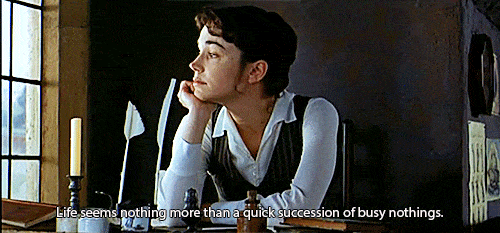
#jane austen#mansfield park#mansfield park 1999#patricia rozema#frances o'connor#jonny lee miller#harold pinter#alessandro nivola#embeth davidtz#victoria hamilton#lindsay duncan#justine waddell#hugh bonneville#sophia myles#anna popplewell#james purefoy#sheila gish#period drama#costume drama
17 notes
·
View notes
Video
Light Engines, Heavy Snow by Vincent Colombo
Via Flickr:
During a heavy snowfall, CSX B727 is seen coming off of the Myles Standish lead in Taunton, MA. Until 1965, trains had a straight shot to Mansfield using the track to the right. The line now only extends about 1.5 miles to serve a couple customers in the industrial park, while the line to Attleboro is still intact.
#70-200 f/4#CSX#CSX B727#CSXT 6226#Canon 77D#EMD GP40-2#Fremont Street#MA#Middleboro Subdivision#Myles Standish#Taunton#Massachusetts#United States
23 notes
·
View notes
Photo


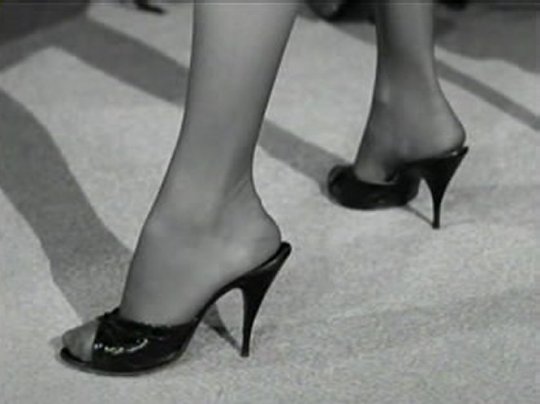


Satan in High Heels (1962). Tagline: “They all went where the heat was hottest!” I’m using this period of enforced social isolation to explore the weirder corners of YouTube for long forgotten and obscure movies. (My boyfriend Pal is accompanying me only semi-willingly). Hard-boiled and stylish, Satan in High Heels represents the acme of early sixties sexploitation not made by Russ Meyer. Characterized by exceptionally good acting, noir-ish and atmospheric black-and-white cinematography and an urgent jazz soundtrack, Satan was filmed in just 21 days with an estimated budget of less than $100,000 – and is a taut 89-minute journey into deep sleaze.
The plot offers the same essential premise as an earlier b-movie I recently raved about, Wicked Woman (1953) starring Beverly Michaels: a disreputable trampy woman washes-up in a new town and proceeds to stir-up trouble. In this case, it’s scheming, manipulative and utterly amoral fairground burlesque dancer Stacey Kane (played by 1950s chanteuse and pin-up queen Meg Myles). Weary of her hard-scrabble two-bit existence bumping-and-grinding in the carnival, Stacey robs her useless heroin addict husband of $900 and flees to New York to re-invent herself as a singer. Cynically using sex and a smile, the redheaded vixen inveigles her way into a gig crooning at the upscale Greenwich Village nightclub managed by fiercely chic and jaded lesbian proprietress Pepe (the reliably-intense Grayson Hall, in a role anticipating Elaine Stritch in Who Killed Teddy Bear? (1965)). Stacey promptly becomes the mistress of wealthy married businessman Arnold Kenyon, but – to considerably complicate things – she also pursues Kenyon’s feckless beatnik son Laurence. (Within the context of the film, we’re presumably meant to think young Laurence is the “appropriate” love interest, but the actor who plays Arnold is significantly more appealing – he’s a suave silver-haired DILF in the tradition of Roger Sterling in Mad Men).
Aside from some fleeting glimpses of side boob in a gratuitous skinny-dipping scene, no actual nudity is on display. But Satan’s producer Leonard Burtman’s background was in the realm of fetish porn magazines (his specialist titles included Bizarre Life, Exotique and High Heels), and that sensibility is amply reflected onscreen in the emphasis on Stacey’s spike-heeled Spring-o-Lator mules (her footwear is by Sydney’s of Hollywood) and especially the kinky black leather dominatrix ensemble she wears (complete with jodhpurs and riding crop) growling the climactic musical number “The Female of the Species” (sample lyric: "I'm the kind of woman/ Not hard to understand / I'm the kind that cracks the whip /And takes the upper hand". At points you can audibly hear the leather creaking as Stacy moves). Everyone snarls their tough-as-nails dialogue, chain-smokes and knocks-back hard liquor. (You could play a fun drinking game taking a sip every time a character onscreen does, but it would risk projectile vomiting).
Sporting an impressive lacquered beehive, Meg Myles is wholly commanding as bitch goddess extraordinaire Stacey. She radiates bad girl anti-charm, and she’s got a sultry way of delivering a jazz ballad, too. Satan is at its most campily enjoyable in the scenes of Stacey and stern task mistress Pepe sparring (the club’s handsome gay pianist Paul – played by Del Tenney – sometimes joins in). “I’m not upset. I’m tired,” Stacy complains at one point. “T-I-R-E-D!” "You'll EAT and DRINK what I SAY until you lose five pounds IN THE PLACES WHERE!" Pepe fires back. “I don’t care if you can breathe or not – you’ll wear a girdle and smile!” With her butch tailored suits and long cigarette holder, Grayson Hall is a consummate scene stealer and a great LGBTQ role model! (Inexplicably, Hall hated this film and used to deny appearing in it). Watch also for simpering ultra-kitsch sex bomb Sabrina (the British Jayne Mansfield) as Stacey’s bitter rival. She’s gloriously awful! Link to watch film.
Let’s face it: the puritanical, hypocritical and homophobic hellsite Tumblr has become a dying platform since it banned adult content in December 2018. I post here less and less. Follow me instead on Instagram, Twitter, Facebook or on my blog. Fuck Tumblr!
#satan in high heels#meg myles#grayson hall#sexploitation#vintage sleaze#b-movie#burlesque#lobotomy room#lobotomy room club#bad girl#kitsch#retro#atomic era#sexploitation cinema
21 notes
·
View notes
Photo
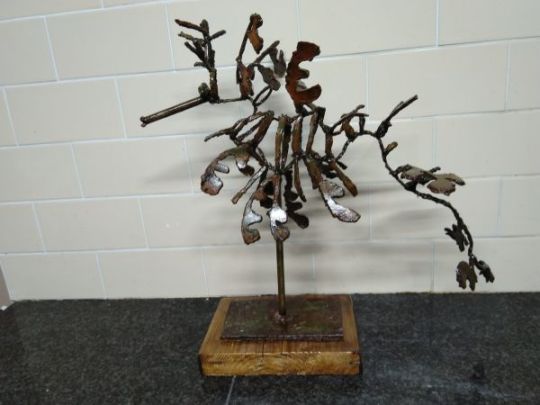




A sculpture titled 'Leafy Sea Dragon (Abstract Sea Dragon Recycled Metal statue)' by sculptor Myles Mansfield. In a medium of recycled mild steel and in an edition of 1/1.
4 notes
·
View notes
Text



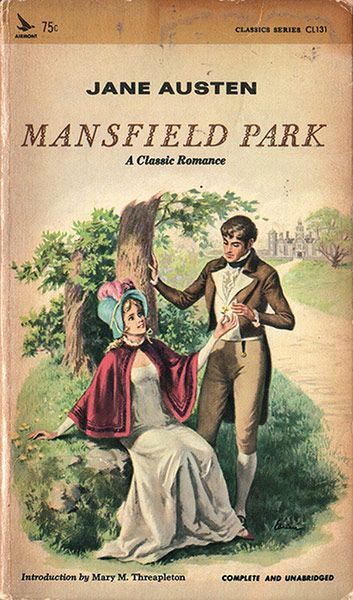
Mansfield Park 2007 - 1983
#mansfield park#billie piper#hayley atwell#jemma redgrave#blake ritson#catherine steadman#iain b macdonald#frances oconnor#johnny lee miller#lindsay duncan#embeth davidtz#alessandro nivola#james purefoy#sophia myles#hugh bonneville#patricia rozema#sylvestra le touzel#nicholas farrell
3 notes
·
View notes
Text
intertextuality
desire / eating disorder / hunger: «to be the girl who lunges at people−wants to eat them» (letissier) / «a way to take all hungers and boil them down to their essence–one appetite to manage–just one» (knapp)
trauma / trauma theory / visceralities of trauma
writers
ada limón, adrienne rich, agnès varda, alana massey, alejandra pizarnik, alice notley, ana božičević, anaïs nin, andrea dworkin, andrew solomon, angela carter, angélica freitas, angélica liddell, ann cvetkovich, anna akhmatova, anna gien, anne boyer, anne carson, anne sexton, anne waldman, antonella anedda, aracelis girmay, ariana reines, audre lorde, aurora linnea
barbara ehrenreich, bell hooks, bessel van der kolk
carmen maria machado, caroline knapp, carrie lorig, cat marnell, catharine mackinnon, catherynne m. valente, cathy caruth, césar vallejo, chris kraus, christa wolf, clarice lispector, claudia rankine, czesław miłosz
daniel borzutzky, daphne du maurier, daphne gottlieb, david foster wallace, david wojnarowicz, dawn lundy martin, deirdre english, denise levertov, detlev claussen, dodie bellamy, don paterson, donna tartt, dora gabe, dorothea lasky, durs grünbein
édouard levé, eike geisel, eileen myles, elaine kahn, elena ferrante, elisabeth rank, elyn r. saks, emily dickinson, erica jong, esther perel, etty hillesum, eve kosofsky sedgwick
fanny howe, félix guattari, fernando pessoa, fiona duncan, frank bidart, franz kafka
gabriele schwab, gail dines, georg büchner, georges bataille, gertrude stein, gilles deleuze, gillian flynn, gretchen felker-martin
hannah arendt, hannah black, heather christle, heather o'neill, heiner müller, hélène cixous, héloïse letissier, henryk m. broder, herbert hindringer, herbert marcuse
ingeborg bachmann, iris murdoch
jacques derrida, jacques lacan, jade sharma, jamaica kincaid, jean améry, jean baudrillard, jean rhys, jeanann verlee, jeanette winterson, jenny slatman, jenny zhang, jerold j. kreisman, jess zimmerman, jia tolentino, joachim bruhn, joan didion, joanna russ, joanna walsh, johanna hedva, john berger, jörg fauser, joy harjo, joyce carol oates, judith butler, judith herman, julia kristeva, june jordan, junot díaz
karen barad, kate zambreno, katherine mansfield, kathrin weßling, kathy acker, katy waldman, kay redfield jamison, kim addonizio
lacy m. johnson, larissa pham, lauren berlant, le comité invisible, leslie jamison, lidia yuknavitch, linda gregg, lisa diedrich, louise glück, luce irigaray, lynn melnick
maggie nelson, margaret atwood, marguerite duras, marie howe, marina tsvetaeva, mark fisher, martha gellhorn, mary karr, mary oliver, mary ruefle, marya hornbacher, max horkheimer, melissa broder, michael ondaatje, michel foucault, miranda july, miya tokumitsu, monique wittig, muriel rukeyser
naomi wolf, natalie eilbert, natasha lennard, nelly arcan
ocean vuong, olivia laing, ottessa moshfegh
paisley rekdal, patricia lockwood, paul b. preciado, paul celan, peggy phelan
rachel aviv, rainald goetz, rainer maria rilke, rebecca solnit, richard moskovitz, richard siken, robert jensen, roland barthes, ronald d. laing
sady doyle, sally rooney, salma deera, samuel beckett, samuel salzborn, sandra cisneros, sara ahmed, sara sutterlin, sarah kane, sarah manguso, scherezade siobhan, sean bonney, sheila jeffreys, shoshana felman, shulamith firestone, sibylle berg, silvia federici, simone de beauvoir, simone weil, siri hustvedt, solmaz sharif, sophinette becker, soraya chemaly, stephan grigat, susan bordo, susan sontag, suzanne scanlon, sylvia plath
theodor w. adorno, thomas brasch, tiqqun, toni morrison
ursula k. le guin
valerie solanas, virginia l. blum, virginia woolf, virginie despentes
walter benjamin, wisława szymborska, wolfgang herrndorf, wolfgang pohrt
zadie smith, zan romanoff, zoë lianne, zora neale hurston
151 notes
·
View notes
Text




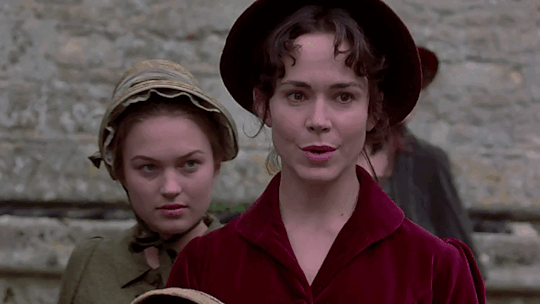


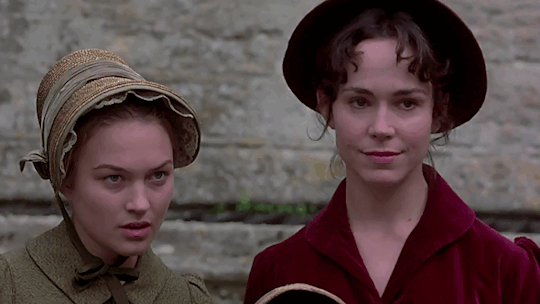










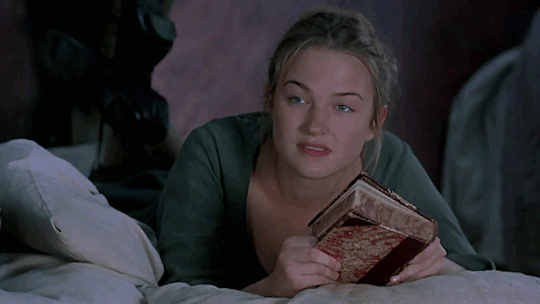


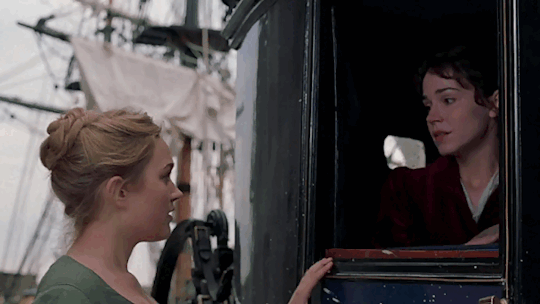


Here is a #49 gifs of Sophia Myles in Mansfield Park. All of these gifs were made by me from scratch, so do not redistribute or claim them as your own. If using, please give this a like and reblog!
0 notes
Photo
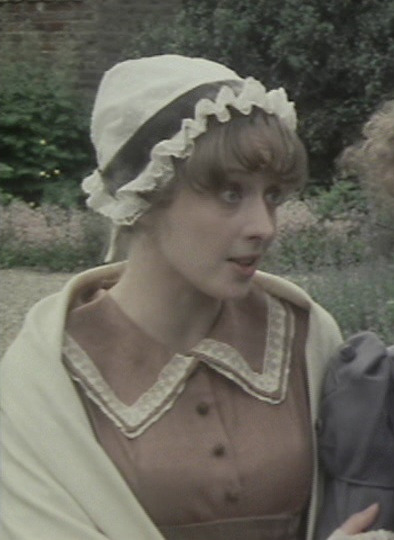

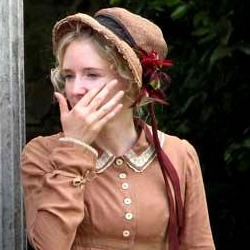


This regency inspired pelisse is from the older, 1980 production of Pride and Prejudice, where it was seen on Irene Richard as Charlotte Lucas. It was used again in 1999 on Sophia Myles as Susan Price in Mansfield Park and was then used on extras in the 2013 Death Comes to Pemberley and the 2017 adaptation of My Cousin Rachel. Most recently the costume was worn by Elle Fanning as Mary Shelley in the 2017 film Mary Shelley.
Costume Credit: Anna, Shrewsbury Lasses
E-mail Submissions: [email protected]
Follow: Website | Twitter | Facebook | Pinterest
#pride and prejudice#mansfield park#death comes to pemberley#my cousin rachel#Mary Shelley#elle fanning#costume drama#period drama
194 notes
·
View notes
